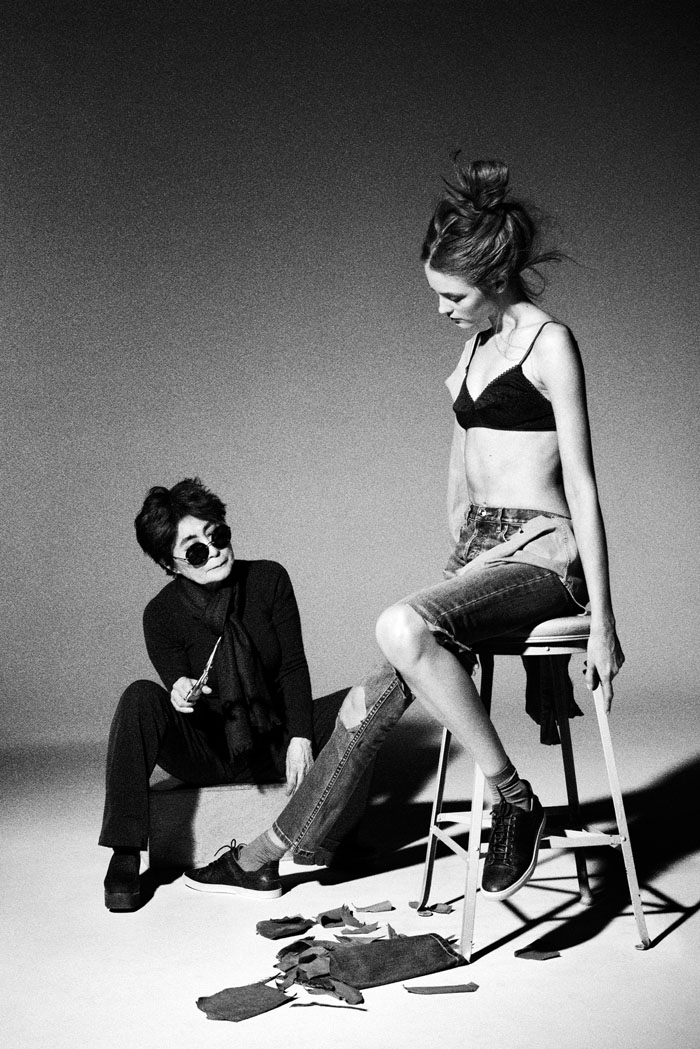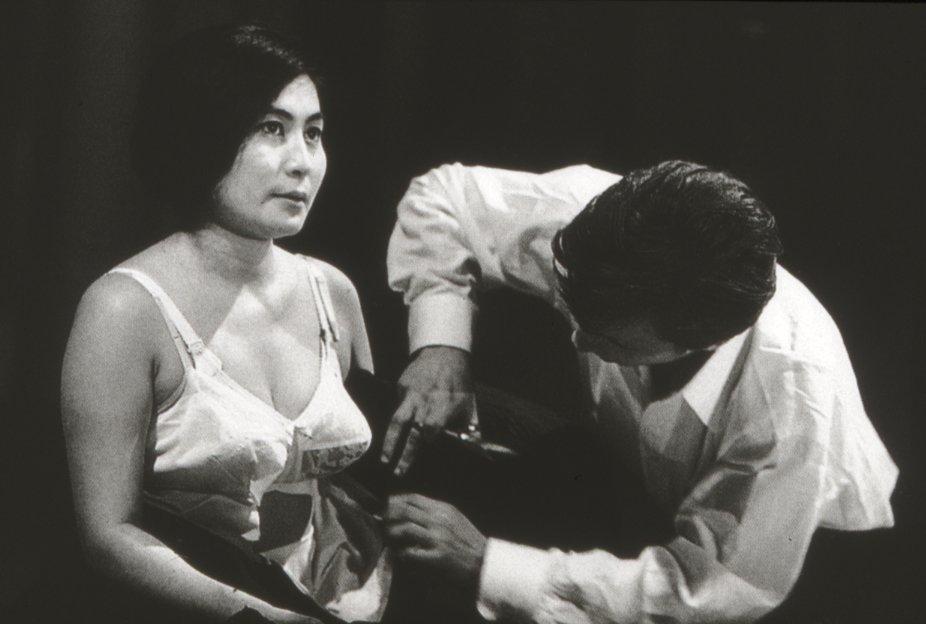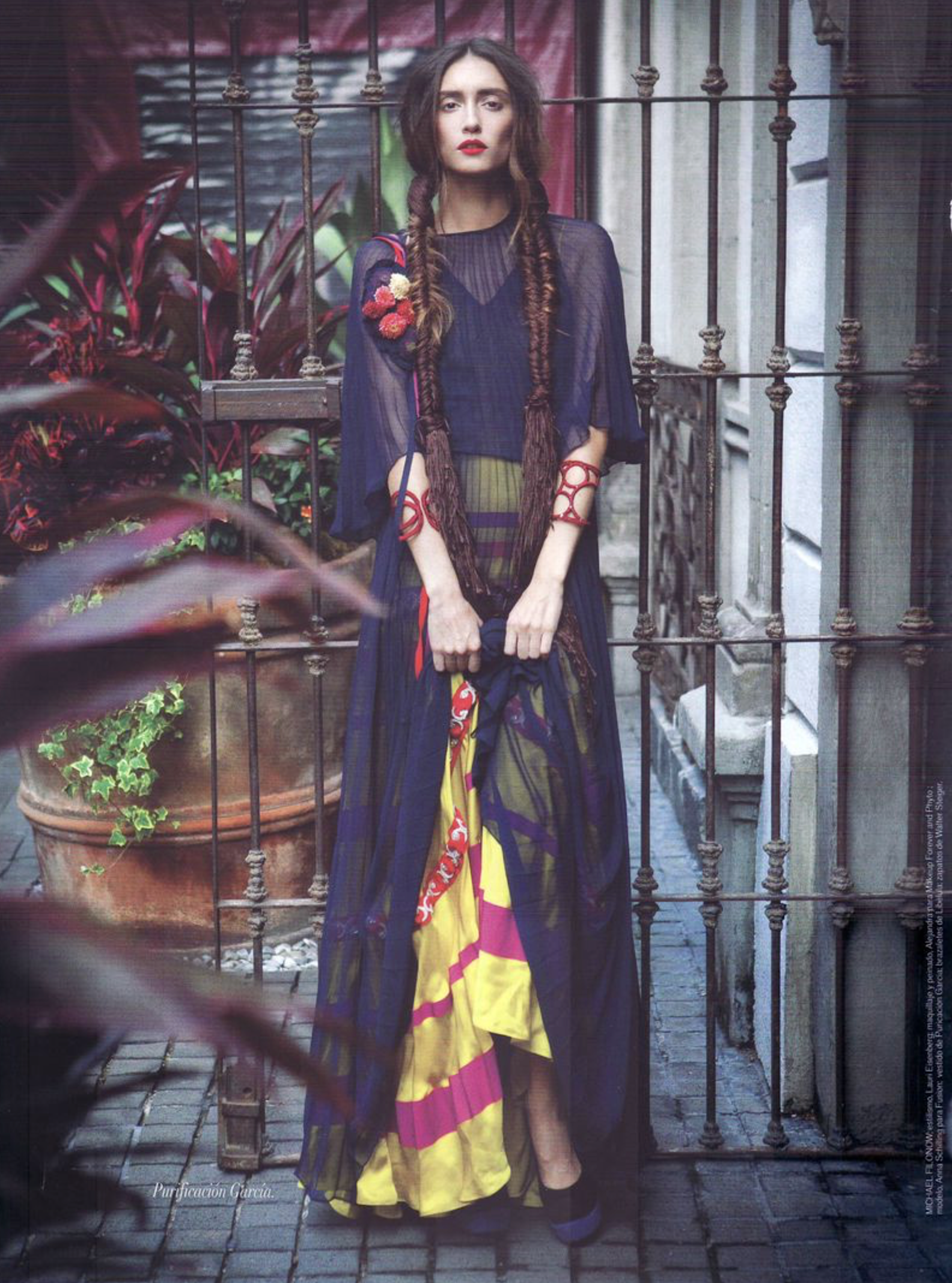Yoko Ono Opens At MOMA | First Reviews
/ Yoko Ono & Vlada Roslyakova By Pari Dukovic For W Magazine May 2015
Yoko Ono & Vlada Roslyakova By Pari Dukovic For W Magazine May 2015
Yoko Ono covers the May issue of W Magazine May 2015, channeling her most famous work from the early ’60s, the violent and erotic ‘Cut Piece’ (1964) in which the artist knelt on stage and invited the audience to come up and snip the clothes off her body with tailor’s shears. Below is a performance of ‘Cut Piece’ by the artist.
Yoko Ono’s May 2015 MOMA show, opened May 17 and runs through September 7, 2015. Read review comments below.
 ‘Yoko Ono: One Woman Show, 1960-1971’ Review: Performance for a Lifetime’ WSJ
‘Yoko Ono: One Woman Show, 1960-1971’ Review: Performance for a Lifetime’ WSJ
In this tightly organized installation, her lively mind, wildly optimistic about what her off-kilter art could do for the world, is expressed through some 125 works—paintings, sculptures, texts, posters, films, sound pieces and recordings. The excellent catalog documents her floating role in the Japanese, British and New York avant-garde during the 1960s, and as an idiosyncratic activist in the antiwar and feminist movements.
Yoko Ono at MOMA: A Mmsunderstood artist finally gets her due The Guardian
Who knows whether Ono ever thought she would really get the retrospective she faked in 1971. But now, at the age of 82, her first (or is it second?) one-woman show really has opened at MoMA, and it goes a long way to revalorising one of the most misunderstood artists of the last 60 years. Her massive fame, and maybe her heal-the-world rhetoric too, has obscured the groundbreaking contributions she made to the art of the 1960s and beyond. At last, the art world has come round. This show – finely curated by Christophe Cherix, the museum’s head of drawings and prints; and Klaus Biesenbach, its chief curator at large – is no guerrilla occupation. It is a belated and jubilant rectification of the historical record, and a victory lap for an artist laughed at for too long.
Yoko Ono and the Myth That Deserves To Die’ Vulture.com
Although it might strike some as more mawkish than her provocative early efforts,Wish Tree exists on the same continuum as 1964’s Cut Piece — in which she sat stone-faced (like a modern Buddha or a proto-Abramovic) in front of an audience and asked them to snip off pieces of her clothing. The possibility of mockery, dissent, and violence is all part of the point. Love it or hate it, Ono’s art is a two-way mirror, throwing your own reaction back at you. In her thoughtful book Reaching Out With No Hands: Reconsidering Yoko Ono,Lisa Carver asks: “Should I have sympathy or admiration or worry about what she might reveal to me about me?”




